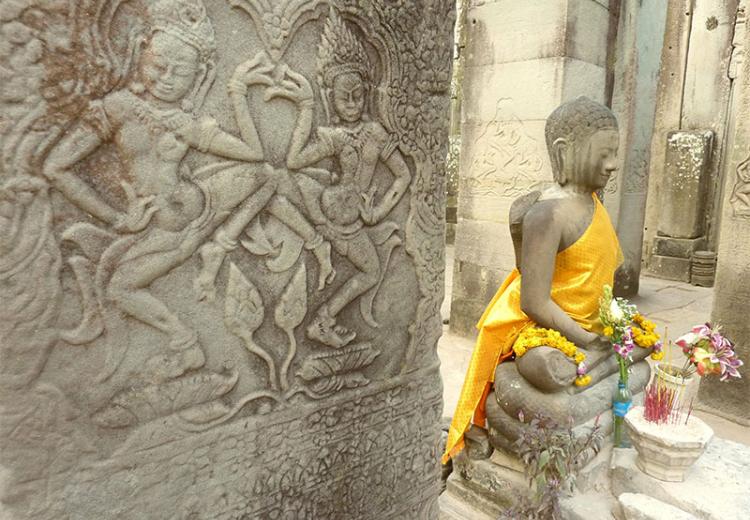Haven't I Seen You Somewhere Before? Samsara and Karma in the Jataka Tales

Malaysian Buddha figurine.
Many English speakers are familiar with the Sanskrit word karma, which made its way into the language during the first half of the nineteenth century. It is often used in English to encapsulate the idea that “what goes around comes around.” This explanation is not entirely divorced from its original Sanskrit meaning, however, it does not contain the entire story. This more complete understanding of the word is brought to life in the stories known collectively as the Jataka Tales. These vignettes tell the story of the 550 lives of the Buddha before he reached Enlightenment. Each story contains a life lesson, often told with humor, and a reminder that one’s karma is bound to one’s actions.
This lesson plan is designed to bring the meaning of karma and the related concept of samsara to life through the reading of the Jataka Tales. This lesson can be used either as an extension of lessons of the birth of Buddhism and the history of Asia, or as an introduction to world literature.
Guiding Questions
What are the Jataka Tales, and what is their purpose?
What are karma and samsara? How are these concepts used in the Jataka Tales?
Learning Objectives
Become familiar with one form of Buddhist storytelling.
Explain what the Jataka Tales are, and their purpose as teaching tools.
Explain the concepts of karma and samsara.
Identify these concepts in the text, and explain how their presence in the tale teaches and supports the lessons of the stories.
